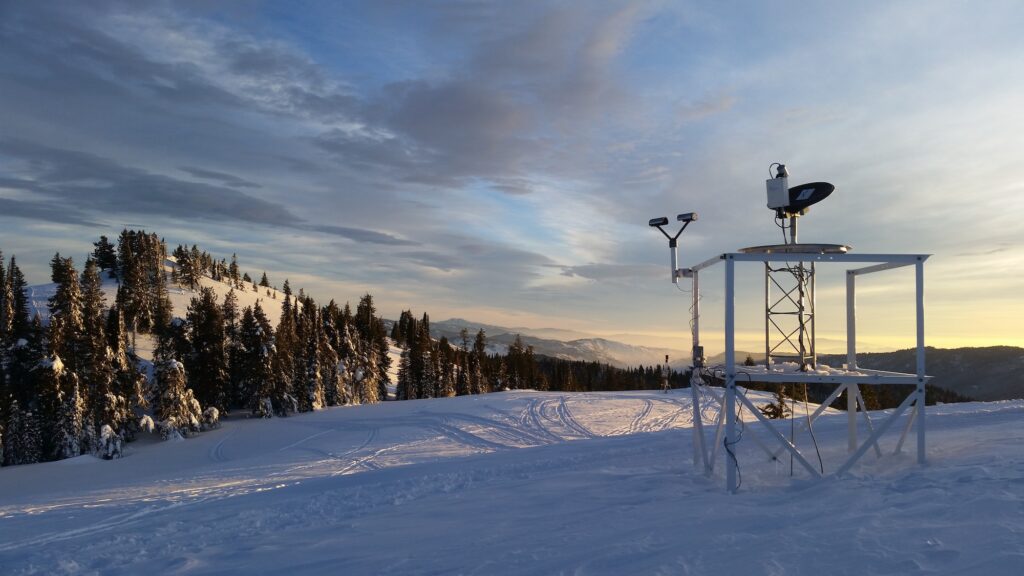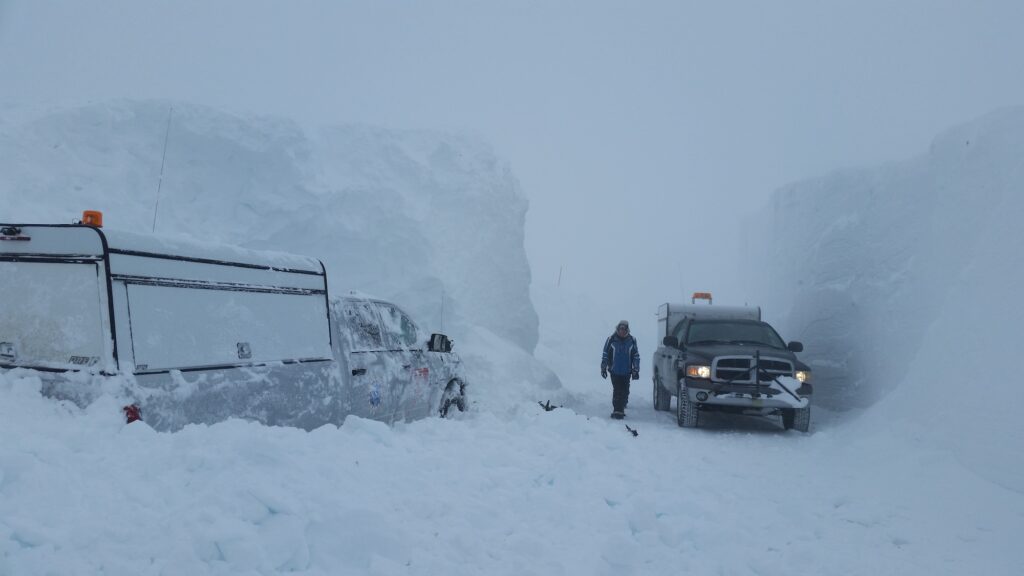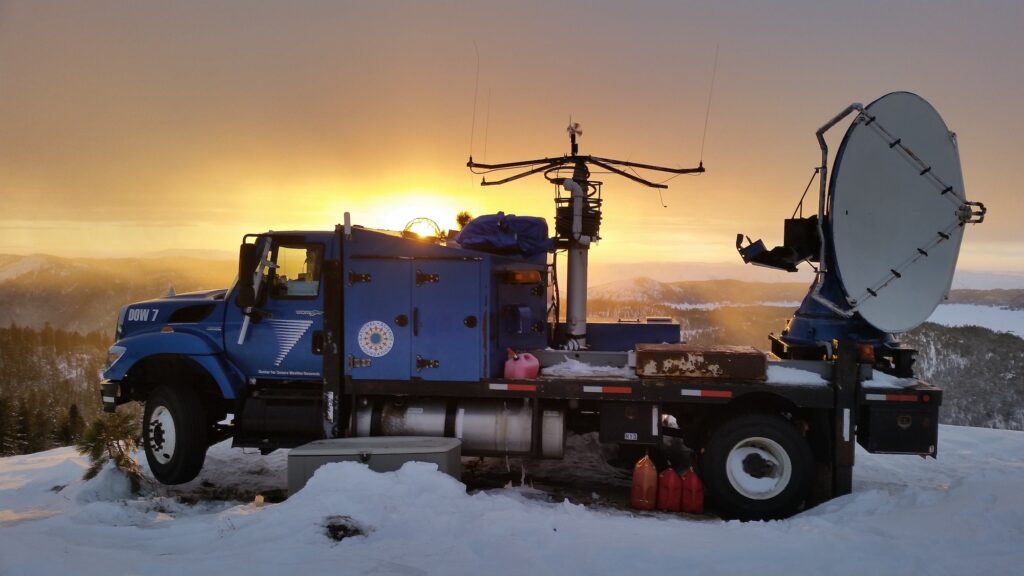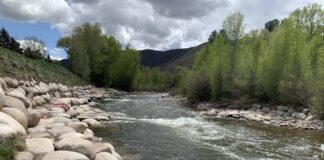
By David O. Williams
VAIL — An innovative new study conducted in Idaho and published in February seems to confirm what Vail and other Colorado ski resorts have believed for decades — that “cloud seeding can boost snowfall across a wide area if the atmospheric conditions are favorable.”
“This is a revelation. We can definitely say that cloud seeding enhances snowfall under the right conditions,” said Sarah Tessendorf, a scientist at the National Center for Atmospheric Research in Boulder and co-author of a new paper on the research conducted by scientists from the University of Colorado Boulder and University of Wyoming, among others.
Cloud seeding uses ground-based generators to disperse dust-sized silver iodide particles into clouds so that ice crystals can form on those particles and fall to the ground in the form of snow. Scientists, water managers and ski industry executives say it’s precipitation that would otherwise stay in the clouds, so cloud seeding is an environmentally safe way to enhance snowfall.
But the efficiency of cloud seeding has so far been hard to prove. Tessendorf said previous cloud seeding studies were unable to achieve statistically significant results because the natural variability of the weather was too great and demanded a larger sample size than could be reasonably obtained, for financial reasons.
In winter 2017, the National Science Foundation, which sponsors NCAR, teamed up with the Idaho Power Company to conduct a field study called SNOWIE (Seeded and Natural Orographic Wintertime Clouds — the Idaho Experiment).
SNOWIE used supercomputing technology to develop a new computer model to simulate cloud seeding, as well as new measurement capabilities, such as a high-resolution cloud radar on a Wyoming research aircraft that can see previously invisible cloud features. Researchers also located mobile radars on mountain ridges north of Boise to see clouds not visible to stationary National Weather Service radars that are blocked by the mountains themselves.
The scientists then used airborne seeding instead of ground-based generators because the silver iodide dispersed downwind from the aircraft in a zig-zag pattern, which is a very unnatural pattern for precipitation to form.
That allowed the scientists “to unambiguously detect the impact of cloud seeding in these clouds using the mobile and airborne radars,” Tessendorf said. “This had never been done before. In the three cases we report on, there was negligible natural snow falling, so the zig-zag pattern was able to be detected very clearly and tracked to the ground to quantify the snow reaching the ground due to seeding.”
One of the examples cited in a press release accompanying the study was a cloud-seeding flight on Jan. 19, 2017, that generated snow for 67 minutes, dusting about 900 square miles with a tenth of a millimeter of snow beyond what was falling naturally.
“This was barely enough snow to cling to the researchers’ eyelashes,” the release reads, ‘but it would have stayed in the air if not for cloud seeding.”
“We tracked the seeding plume from the time we put it into the cloud until it generated snow that actually fell onto the ground,” said Katja Friedrich, a University of Colorado Boulder professor and lead author of the new study.

Finding the ideal storms
Dave Kanzer, deputy chief engineer for the Colorado River District, helps oversee a system of 25 ground-based cloud-seeding generators in the central Colorado region that includes Grand, Summit, Eagle and parts of Pitkin County. Nearby generators include one atop Arrowhead and another above Camp Hale.
Kanzer said storms from the north and northwest, which tend to be colder, are ideal for cloud seeding, with temperatures in the clouds no higher than 21 degrees Fahrenheit and no lower than 5 degrees Fahrenheit. If the clouds have the right temperature range and the right moisture levels but lack sufficient particles for ice crystals to form, that’s where cloud seeding comes in.
“We take advantage of the first two and we add the proper amount of particulate matter to enhance the snowfall and precipitation … and that accumulates in the snowpack somewhere in the range of between 5 and 15% on a per storm basis when those conditions are met,” Kanzer said. “And that helps to increase the water yield of the snow sheds in the range of 1 to, 4% of water on a seasonal basis.”

A tool to maintain snowpack
The Colorado Department of Natural Resources regulates cloud seeding, permitting operations in nine different parts of the state. The operations in the central zone, at the headwaters of the Colorado River, are funded by a wide range of groups, including Front Range utilities and water districts that divert Western Slope water, including Denver Water and Northern Water.
The Colorado River District spends around a $150,000 a year contracting with Western Weather Group to run the program, which Kanzer said is about the same amount Vail Resorts spends on the program for its four Colorado ski areas – Vail, Beaver Creek, Breckenridge and Keystone.
Vail Resorts declined to comment for this story.
Kanzer presented on cloud seeding at a November Eagle River Watershed Council meeting in Avon, where a few of the 50 or so participants got heated in their questioning of the environmental safety of the process.
Kanzer said cloud seeding is safe, using inert silver iodide that cannot be detected in the environment after it’s released into clouds. He added the process could become increasingly critical to maintaining mountain snowpack as the climate changes.
“It’s one tool that we can use to mitigate or adapt to the changes that we have not only predicted but are starting to experience with shorter snow-covered seasons,” Kanzer said. “And so (cloud seeding) helps us extend that time or at least forestall the reduction.”
Aspen Journalism collaborates with The Vail Daily and other Swift Communications newspapers on coverage of water and rivers. This story ran in the Feb. 25 edition of Aspen Journalism and The Vail Daily.
This story was supported by The Water Desk using funding from the Walton Family Foundation.





